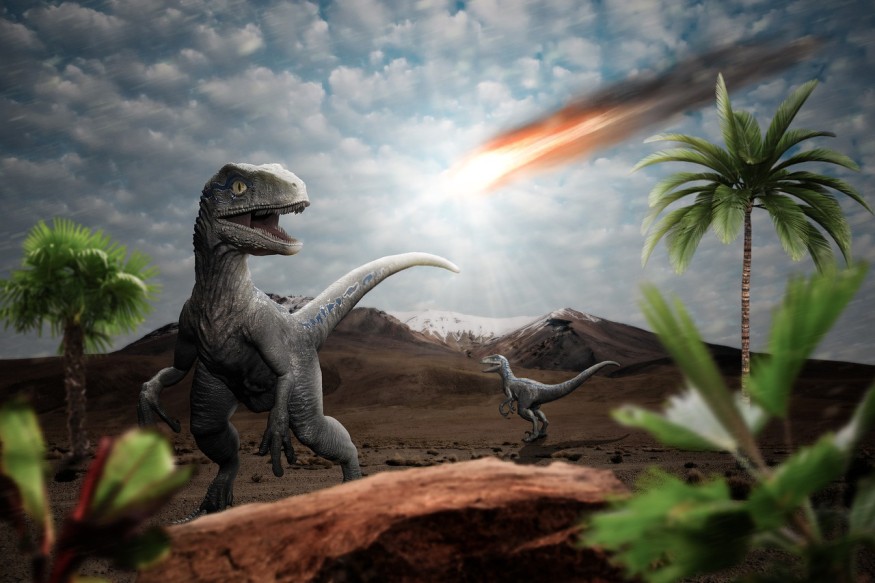
Researchers from the University of St. Andrews led a study that suggests that the combination of sulfur gases and climate cooling has contributed to the mass extinction of dinosaurs.
Experts said that sulfur gases were released into the atmosphere following the Chicxulub impact and circled the world for years which cooled the planet and led to the extinction of dinosaurs around 66 million years ago, MailOnline reported. Although the event was catastrophic for dinosaurs and other ancient life, the six-mile-wide asteroid impact in Yucatan Peninsula allowed the diversification of mammals.
Dinosaurs Went Extinct Due to Sulfur Gases and Climate Cooling After the Asteroid Impact, New Research Suggests
Dinosaurs Were "Just Really Unlucky"
Researchers who studied the Chicxulub impact wrote that sulfur gases circulated the Earth's atmosphere for several years and cooled the climate leading to the mass extinction of life.
Dr. Aubrey Zerkle from the University of St Andrew School of Earth and Environmental Sciences said that sulfur gases are deadly for dinosaurs but supportive for mammals. The Scotsman reported that the asteroid landed in the marine environment, which was rich in sulfur and other volatile elements. In the end, Dr. Zerkle said that "the dinosaurs were just really unlucky."
Researchers examined the sulfur isotopes released from the impact and landed in a nearby sea. The atmospheric sulfur in the stratosphere reportedly scattered solar radiation coming inside the planet and prolonged climate cooling for many years after the asteroid impact.
Due to this, the planet experience acid rain and reduced sunlight available for photosynthesis, which is crucial in plant life and marine plankton that play a crucial role in the food chain.
Initially, the asteroid impact only caused rock dust, soot, and wildfires, but the sulfur gases extended for many years that would have tortured the dinosaurs from reduced sunlight, extreme cooling, and acidification of both land and sea. Study author Christopher Junium said that this extended duration likely played a central role in the severity of the mass extinction event.
End of the Cretaceous Signals Start of Paleogene Period
Daily Mirror reported scientists have already thought of sulfur as a primary forcing agent for the mass extinction of dinosaurs that marked the end of the Cretaceous period and the start of the Paleogene period. However, they are not sure to what extent sulfate aerosols contribute to the mass extinction event.
The Cretaceous period lasted from 145 to 66 million years ago, which is a period dominated by reptiles and dinosaurs and is characterized by a warm climate. However, the mass extinction marked the Cenozoic era, in which humans live today.
The findings of the study show that the presence of sulfur could be attributed to the asteroid impact instead of volcanism in the Decca Traps Large Igneous Province, as other scientists thought.
The findings of the study, titled "Massive Perturbations to Atmospheric Sulfur in the Aftermath of the Chicxulub Impact," are published in the journal PNAS. Researchers from the University of St. Andres, Syracuse University in New York, the University of Bristol, and Texas A&M University conducted the study.
Check out more news and information on Paleontology in Science Times.










